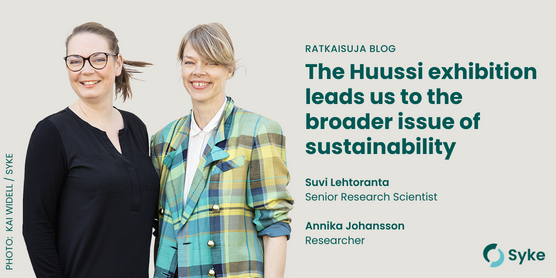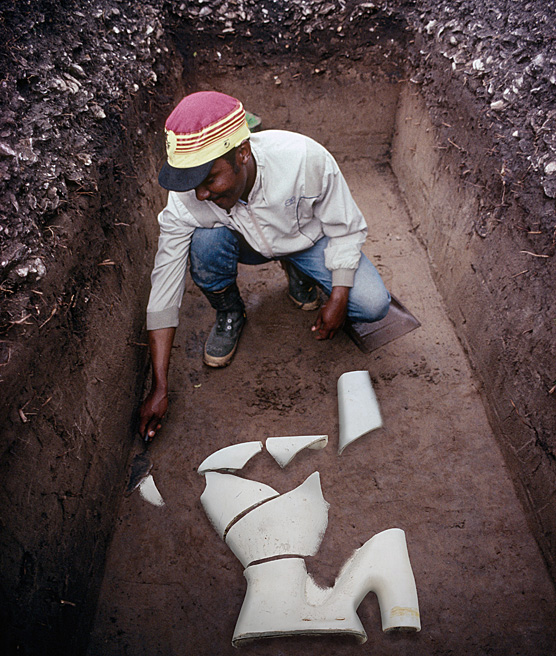
The title of the 18th Venice Architecture Biennale is The Laboratory of the Future. The Biennale opened on May 18th, and the event will run until the end of November. The Finnish pavilion exhibition is called Huussi – Imagining the future history of sanitation. The exhibition brings water consumption and nutrient recycling into the international architectural debate for the first time. The exhibition has been curated by architect and environmental artist Arja Renell.
In the most internationally significant architecture competition with a wide audience, the Huussi exhibition challenges architects to participate in sustainability transformation. The exhibition questions the current sanitation systems we take for granted and examines them from the perspective of future generations. In the exhibition, the sympathetic Huussi with a heart-shaped window, familiar to us Finns, leads us to the broader issue of sustainability. Huussi is the Finnish word for dry toilet.
The Finnish exhibition gained considerable attention and international interest even before the opening. Sufficient water and the need for nutrients for food production pose global challenges. The upcoming summer is predicted to be exceptionally dry for the second year in a row, also in the country of the exhibition organizer, Italy. The drought this past spring has already caused Venice's waterways to become unusually dry.
Wastewater treatment is globally advanced in Finland, although there is still work to be done in promoting the recovery of nutrients. For example, in Venice, some of the wastewater from toilets ends up in the canals of Venice without any treatment. This initially gave curator Arja Renell the idea for the topic of the Finnish pavilion.

The exhibition examines current sanitation solutions from a future perspective. Pictured here is an "archaeological excavation" of a contemporary water toilet.
© Photo by James Quine Alamy Stock Photo edited by Eero Renell
Art helps find new ways to solve sustainability challenges
The biggest challenges of sanitation solutions are related to the urban scale. As such, Huussi as dry toilet is not the answer. However, the exhibition emphasizes that there already exists more sustainable technical sanitation solutions on an urban scale that use less water, recover nutrients and produce energy.
In Europe there are already a few city-scale pilot sites. In them, toilet wastewater is diverted from other wastewater for separate treatment. It's a bit surprising, however, that Finland, the country of the exhibition, still doesn't have its own pilot site. Instead, in the pilot sites in other parts of Europe, advanced solutions have been in use for more than a decade. For example, in Helsingborg, Sweden, there is a facility with more than a thousand inhabitants. Could Finland finally join the pioneers of advanced sanitation solutions? The Ministry of the Environment's Nutrient Recycling Program would now offer exceptionally significant support for this.
Art is an effective tool for stimulating discussion and it can produce new ways to solve sustainability challenges. The Finnish Environment Institute Syke has provided research data and content for the Huussi exhibition as well as for the exhibition catalogue Death to the flushing toilet. Cooperation between science and art is important and fruitful. Science tries to tell how things are, while art has unlimited means of expression. Art can convey something that cannot be described with words.
Sanitation as a subject is multidimensional. In addition to information, it is influenced by, for example the current infrastructure and attitudes. The role of architects and artists as promoters of the sustainability transformation is therefore important. In the hands of art, scientific information can be conveyed from new perspectives, bringing new dimensions and means of expression. Together, we can promote sustainability transformation more effectively.
Suvi Lehtoranta is a Senior Research Scientist in Syke's Climate solutions unit. Her dissertation dealt with source separation of wastewater and the environmental effects of nutrient recycling. She hopes that the Huussi exhibition will inspire architects and promote the emergence of bold Finnish sanitation solutions.
Annika Johansson is a researcher in Syke's Climate solutions unit. In her work, she considers sustainability from the perspective of climate impact assessment and nutrient and material recycling. In her spare time, she enjoys the inspiring effect of art and architecture.
Read more
Enhanced utilization of wastewater nutrients. SYKE Policy Brief 30 Nov. 2022 (helda.helsinki.fi)
Towards circular economy in wastewater management: Environmental impacts, benefits and drawbacks of improved nutrient recovery and recycling by source separation. Doctoral dissertation (helda.helsinki.fi)
Opinions of blog contributors do not necessarily reflect the official views and opinions of the Finnish Environment Institute.